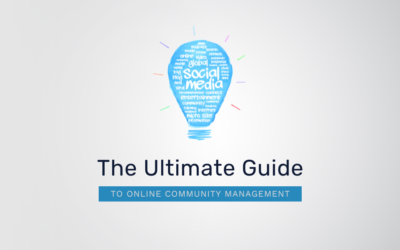Branding may seem like just a marketing buzzword, but the truth is that a strong brand identity has the power to transform a business. Consider how Starbucks took a simple product like coffee and created an iconic brand recognized across different countries. Or how Apple’s unmistakable branding turned the tech company into one of the most valuable brands in the world.
The key to success like Starbucks and Apple is establishing a solid branding strategy. When done right, an effective branding strategy helps you stand out from the competition, connect emotionally with your customers, and drive business growth.
In this blog post, we’ll showcase examples of successful branding strategies through real-world case studies. By analyzing brands that got it right, we’ll demonstrate how powerful branding directly impacts the bottom line.
Let’s dive into these success stories!
The Pillars of Powerful Branding

Target Audience
Defining and deeply understanding your target audience is one of the most critical components of a successful branding strategy. Your brand identity, tone, and messaging should all be crafted with your audience at the forefront. As the famous saying goes, “If you try to please everyone, you please no one.”
An excellent example that illustrates the power of honing in on a target demographic is Dove’s “Real Beauty” campaign. For decades, the beauty industry bombarded women with unrealistic imagery that celebrated extreme thinness and airbrushed perfection.
Dove sought to disrupt this toxic status quo by firmly establishing themselves as a brand that speaks to the everyday woman. Their research showed that only 2% of women considered themselves beautiful, indicating a huge unmet need in the market.
By resolutely focusing their branding on the average female consumer through inclusive messaging and relatable models, Dove saw meteoric growth. Brand awareness doubled, sales rose from $2.5 billion to $4 billion in the first ten years, and Dove further differentiated itself from competitors.
This incredible success demonstrates how laser-focusing on understanding and resonating with your core target audience through branding is a proven recipe for standing out.
Brand Identity
A brand’s visual identity and personality are key to making it recognizable and building an emotional connection with its audience. Brand identity encompasses all the visual elements that represent your brand, as well as the unique tone and style that characterize your brand voice.
The main components of brand identity include:
- Logo: A memorable and recognizable logo is essential for establishing your brand. It should be an iconic representation of your company that catches the eye.
- Colors: Choosing brand colors that reflect your personality and resonate with your audience helps make your brand instantly identifiable.
- Fonts: Typography choices like fonts and text styles further develop your distinctive brand look.
- Tone of voice: Crafting your brand’s tone of voice, from formal to casual to humorous, shapes how you communicate your brand values.
A strong, cohesive brand identity creates familiarity and fosters trust between a company and its customers. For example, Airbnb’s brand identity centers around their iconic logo of a heart made up of overlapping, colorful shapes. This abstract “Belong Anywhere” symbol encapsulates the brand’s open-minded spirit and mission of belonging.
Airbnb’s consistent use of bold colors, playful lettering, and upbeat, welcoming tone of voice in their communications has built a highly recognizable brand identity strongly aligned with their values of inclusion and adventure.
This ultimately inspires confidence and loyalty in Airbnb as a company that authentically stays true to what they stand for.
Compelling Brand Narratives
Crafting compelling brand messages and narratives is crucial for making meaningful connections with your target audience. Through impactful storytelling across all customer touchpoints, brands can share their purpose in an authentic way that resonates deeply with consumers.
Take Patagonia, for example. The outdoor apparel company has built their brand on environmental activism. Their messaging consistently focuses on issues like sustainable manufacturing, corporate responsibility, and protecting public lands.
Patagonia shares stories of their direct work in these areas, whether funding grassroots activists through their “Action Works” program or launching campaigns to increase voter participation.
This powerful brand storytelling helps consumers connect with Patagonia on a deeper level. Customers see their purchases as joining a movement, not just buying quality products.
Patagonia’s success illustrates how sharing compelling narratives that align with your brand’s purpose can shape audience perceptions and foster loyalty beyond transactional relationships.
Consistency & Adaptability

Brands must strive to express themselves consistently across all consumer touchpoints in order to build recognition and trust. Using consistent colors, fonts, messaging, imagery, and more allows customers to immediately identify a brand at a glance.
Starbucks serves as an excellent example of the power of consistency for decades they have unwaveringly maintained their commitment to high-quality coffee drinks and superior customer service. Customers know they can walk into any Starbucks location around the world and receive the same delicious drinks and welcoming environment the brand has built its reputation on.
While consistency creates familiarity and loyalty, brands must also remain nimble and adaptable to stay relevant, especially in rapidly changing markets. A brand’s visual identity often requires modernization over time.
For example, ridesharing giant Uber has updated its app logo several times over the years to keep pace with its global expansion and mobile-first focus. Adapting brand expressions conveys forward momentum while retaining brand recognition.
Case Studies in Action
Dove’s “Real Beauty” campaign resonated strongly with women who were tired of unrealistic beauty standards in media. By using real women of all sizes and ethnicities in their ads, Dove targeted females aged 18-49 who appreciated authenticity. This shift in brand identity and messaging resulted in increased sales, social buzz, and brand loyalty.
Similarly, Airbnb rebranded with a new brand identity focused on “Belong Anywhere.” Using interactive digital ads and unique visuals, Airbnb targeted adventurous millennials seeking unique lodging options. This cohesive rebrand led to a 200% increase in guest bookings and expanded their market reach.
On the other hand, Patagonia doubled down on their brand as environmental activists. Through compelling storytelling and corporate social responsibility, Patagonia targeted eco-conscious consumers who prioritized sustainability. This consistent messaging helped grow their market share in outerwear to over $600 million in sales.
By strategically defining their target audiences, crafting consistent identities and emotional messaging, and sticking to their core values, these brands achieved tangible growth and differentiation. Their success demonstrates the power of human-centered branding techniques applied consistently across touchpoints.
Why Apply a Branding Strategy?

Having a strong, strategic branding approach provides numerous benefits for businesses of all sizes across industries. As the case studies in this piece have shown, developing a thoughtful branding strategy enables companies to achieve increased brand awareness, market share growth, customer loyalty, and overall business success.
Whether you’re a small startup or a Fortune 500 firm, focusing time and resources on branding is an investment that yields tangible returns. A strong brand identity and consistent messaging help your company stand out from competitors, appeal to your ideal audience, and build lasting consumer relationships.
Developing powerful narratives and campaigns enables you to connect with customers on an emotional level beyond just exchanging products or services.
Grow Your Business
Branding and developing a strong business identity is not just for large corporations companies of any size can reap massive benefits from purposeful branding. The case studies we’ve explored prove that taking the time to understand your target audience, craft a cohesive brand image, tell compelling stories, and remain consistent yet adaptable, can lead to increased awareness, loyalty, and profits.
If you’re ready to grow your business or take your brand to the next level, now is the time to put branding at the forefront.
Here are some key takeaways:
- Clearly define your target demographic and niche. Research competitor brands and identify unmet needs or demands.
- Develop your brand identity. Choose logo colors, fonts, and imagery that align with your mission. Create branded templates, graphics, and content guidelines.
- Craft your core brand messaging and narratives. Determine what makes your company credible, unique, and worth remembering.
- Ensure brand consistency whenever you communicate or promote your business. Adapt your brand as needed but maintain recognition.
- Invest in brand awareness and marketing. Promote content that engages your audience and conveys your brand personality.
Need help developing or executing your branding strategy? The experts at Office Admin Help can guide you through the process so you can keep your focus on business growth and operations. Our experienced virtual assistants can take on your administrative tasks so you have time for high-impact branding initiatives.
Reach out today to get started on transforming your brand.




